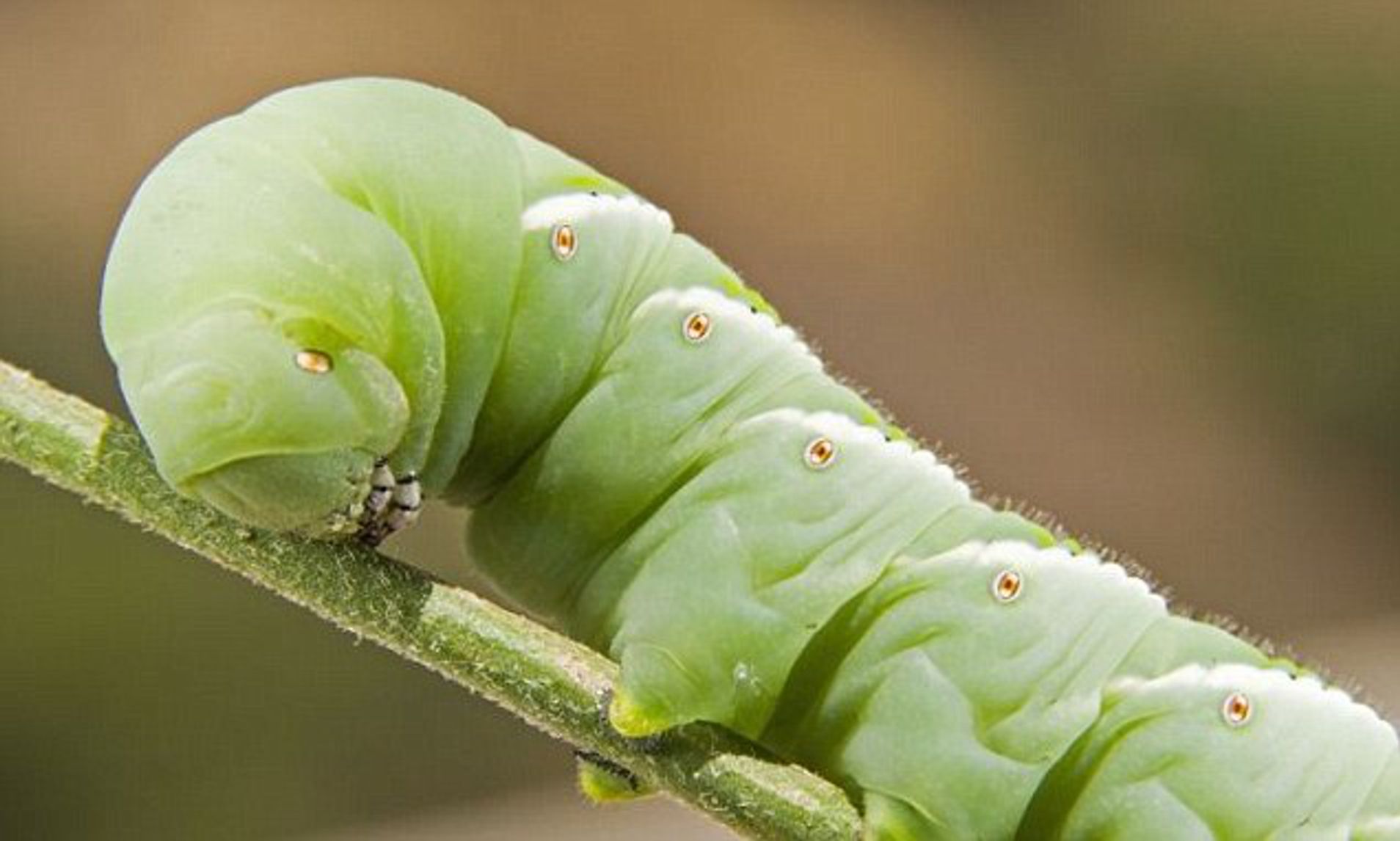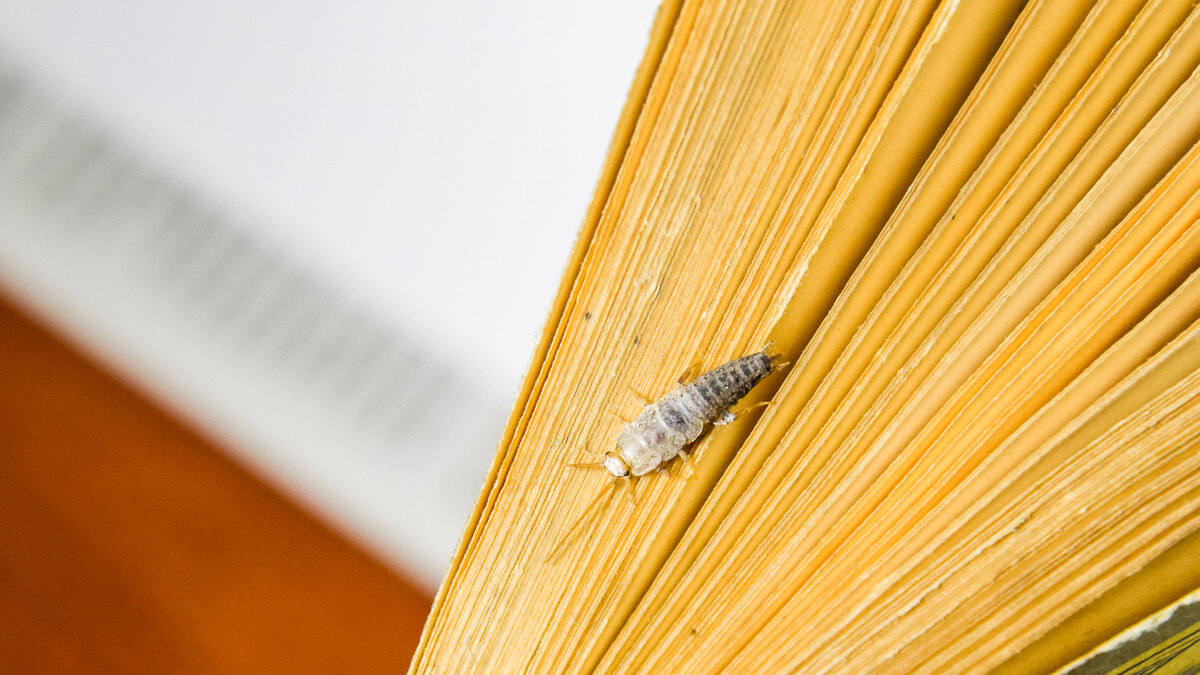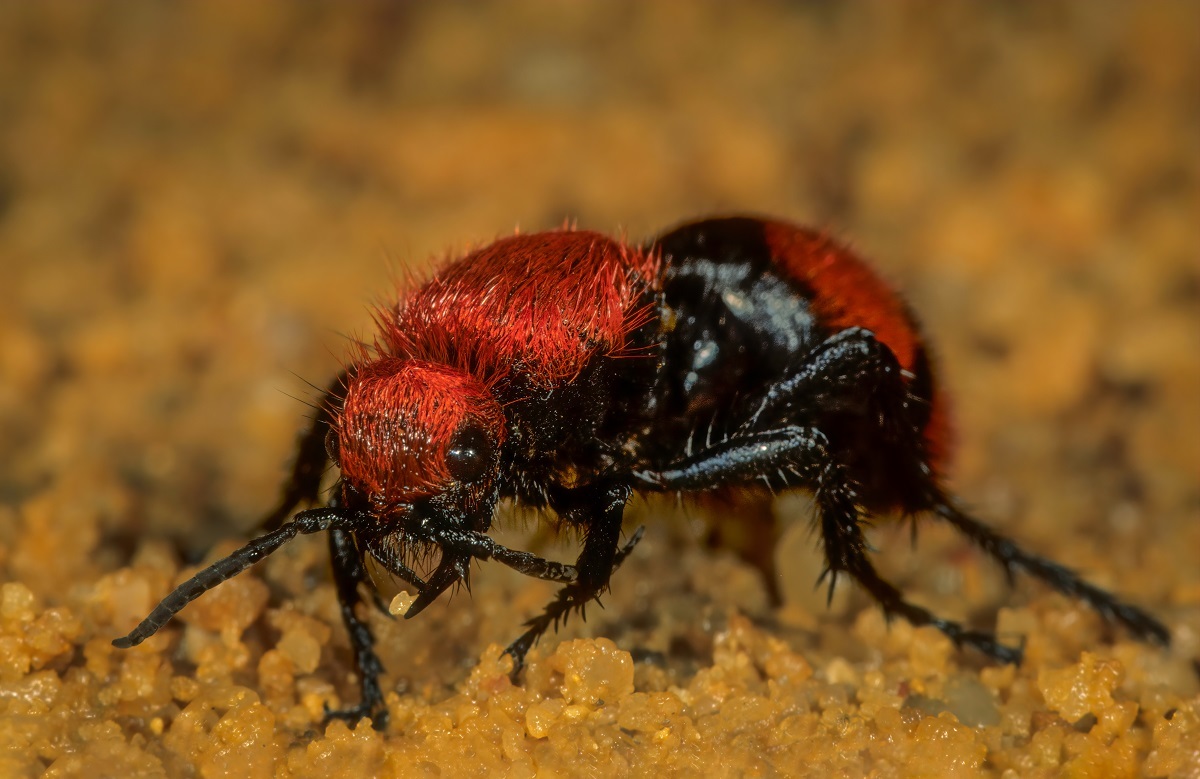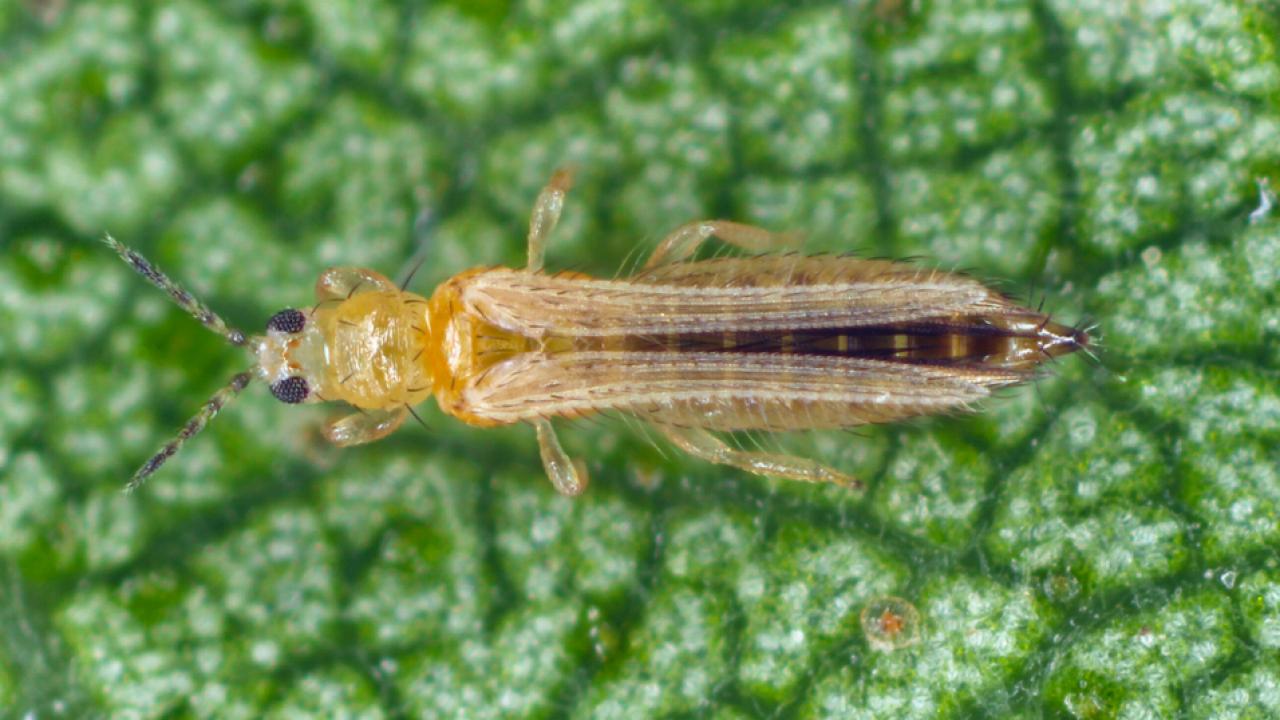Home>Gardening News and Trends>Latest News>What Insects Does Bifenthrin Kill?
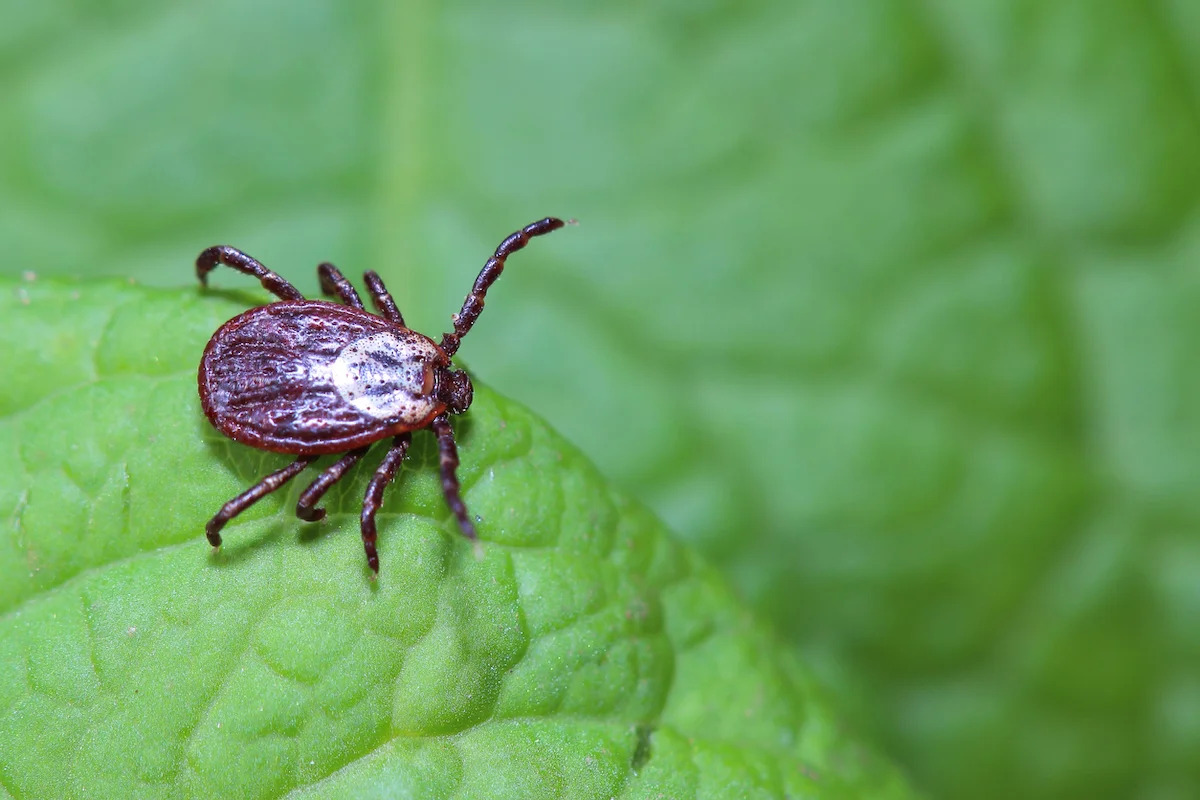

Latest News
What Insects Does Bifenthrin Kill?
Published: December 6, 2023
Discover the latest news on Bifenthrin and its effectiveness in eliminating a wide range of insects, providing you with valuable insights for pest control.
(Many of the links in this article redirect to a specific reviewed product. Your purchase of these products through affiliate links helps to generate commission for Chicagolandgardening.com, at no extra cost. Learn more)
Table of Contents
Introduction
Welcome to our article on the fascinating world of Bifenthrin and its incredible effectiveness in eliminating a wide variety of insect pests. If you’ve ever dealt with pesky insects invading your living space or wreaking havoc on your garden, you know just how crucial it is to have an effective solution at hand.
Bifenthrin is a powerful insecticide that has gained popularity for its ability to effectively control a range of insects. Whether you’re dealing with ants, mosquitoes, termites, or any other kind of pest, Bifenthrin can be an invaluable tool in your arsenal. In this article, we will explore what Bifenthrin is, how it works, and the specific insects that it targets.
Before we delve into the specifics, it’s important to note that Bifenthrin belongs to a class of chemicals called pyrethroids. Pyrethroids are synthetic versions of pyrethrins, which are natural insecticides derived from chrysanthemum flowers. Bifenthrin is highly effective against a wide range of insects and provides long-lasting residual control.
Understanding the science behind Bifenthrin’s effectiveness is important to grasp how it can be so successful in targeting and eliminating insect pests. By gaining insight into how this remarkable pesticide works, we can better appreciate its potential impact on our pest control efforts.
In the following sections, we will explore how Bifenthrin works, discuss the specific insects it targets, evaluate its effectiveness, and address safety considerations and environmental impacts. So, let’s delve into the world of Bifenthrin and discover its power in combating pesky insect invaders!
What is Bifenthrin?
Bifenthrin is a synthetic pyrethroid insecticide that is widely used for its potent pest control properties. It was first registered for use in the United States in 1985 and has since become a go-to solution for homeowners, farmers, and pest control professionals alike.
This insecticide is derived from natural pyrethrins, which are extracted from chrysanthemum flowers. However, unlike natural pyrethrins, Bifenthrin is chemically synthesized to increase its stability and longevity, allowing for enhanced residual control.
Bifenthrin works by targeting the nervous systems of insects, disrupting their normal function and ultimately leading to paralysis and death. It acts as a neurotoxin, affecting the sodium channels in the nervous system of insects, preventing the transmission of nerve signals.
One of the key features of Bifenthrin is its ability to remain active for an extended period. It has a long residual effect, meaning that it can continue to control insects even days or weeks after application. This makes it particularly effective in outdoor applications, protecting crops, lawns, and gardens from pests over an extended period.
Another advantage of Bifenthrin is its versatility. It can be used in various formulations, including sprays, granules, and dusts, making it suitable for different applications and target pests. It is commonly used in agricultural settings, residential areas, and even in commercial and industrial spaces.
Bifenthrin is also known for its effectiveness against both crawling and flying insects. It can control a wide range of pests, including ants, roaches, termites, mosquitoes, ticks, fleas, spiders, and many others. This versatility makes it a valuable tool for pest management professionals and homeowners.
When using Bifenthrin, it is important to carefully follow the instructions and safety precautions provided on the product label. Though it is considered safe when used correctly, it is still a chemical pesticide, and taking proper precautions is essential to protect yourself, others, and the environment.
In the following sections, we will explore how Bifenthrin works, the specific insects it effectively targets, its overall effectiveness, safety considerations, and potential environmental impacts.
How Does Bifenthrin Work?
To understand how Bifenthrin works as an effective insecticide, it’s important to delve into its mode of action. Bifenthrin targets the nervous system of insects, specifically the sodium channels, which are responsible for transmitting nerve signals. By disrupting the proper functioning of these channels, Bifenthrin effectively paralyzes and kills the targeted pests.
When an insect comes into contact with Bifenthrin, the insecticide quickly enters its body through its exoskeleton or by ingestion. Once inside the insect, Bifenthrin binds to the sodium channels present in the insect’s nerve cells. This binding prevents the channels from functioning properly, leading to a disruption in the transmission of nerve signals. As a result, the insect’s nervous system becomes overloaded and unable to function, ultimately leading to paralysis and death.
What makes Bifenthrin particularly effective is its ability to persist in the environment for an extended period. This means that even after application, Bifenthrin remains active, continuing to control pests over time. This residual activity allows for long-term protection against various insects, reducing the need for frequent reapplication.
In addition to its neurotoxic effects, Bifenthrin also acts as a stomach poison. When insects ingest Bifenthrin, it disrupts the normal functioning of their digestive systems. This further weakens the insect’s overall health and contributes to its ultimate demise.
Bifenthrin’s effectiveness is not limited to just one type of insect. It targets a broad spectrum of pests, including but not limited to ants, termites, roaches, mosquitoes, ticks, fleas, spiders, and many more. Its versatility makes it a valuable tool for pest control in both residential and commercial settings.
It’s worth noting that Bifenthrin is labeled for use on specific pests and on designated areas. It’s important to read and follow the instructions provided on the product label, as well as any local regulations, to ensure its safe and effective use.
In the following sections, we will explore the specific insects that Bifenthrin effectively targets, evaluate its overall effectiveness, discuss safety considerations, and address any potential environmental impacts.
Insects Targeted by Bifenthrin
Bifenthrin is a powerful insecticide that targets a wide range of pests, making it a versatile tool for pest control in various settings. Whether you’re dealing with crawling insects or flying pests, Bifenthrin can effectively eliminate them. Let’s explore some of the insects that are commonly targeted by Bifenthrin:
- Ants: Bifenthrin can effectively control different species of ants, including fire ants, carpenter ants, and pavement ants. It disrupts their nervous system, leading to paralysis and death.
- Termites: Termites are notorious for causing significant damage to structures. Bifenthrin is highly effective in controlling termites, either as a preventive treatment or as a part of a termite elimination program.
- Roaches: Bifenthrin is successful in targeting various species of roaches, such as German cockroaches and American cockroaches. It can be applied as a barrier treatment or directly to roach-infested areas.
- Mosquitoes: Bifenthrin is commonly used to control mosquitoes, both in residential and outdoor settings. It can be applied as a spray or fog to reduce mosquito populations and minimize the risk of mosquito-borne diseases.
- Ticks and Fleas: Bifenthrin provides effective control against ticks and fleas, which are not only a nuisance but also vectors for diseases. It can be applied to lawns, outdoor spaces, and pet resting areas to safeguard both humans and pets.
- Spiders: Bifenthrin effectively targets various spider species, including black widows and brown recluse spiders. It disrupts their nervous systems, leading to paralysis and eventual elimination.
- Aphids and Whiteflies: Bifenthrin is commonly used in agriculture to control aphids and whiteflies. It can be applied as a spray or as a part of integrated pest management programs to protect crops and ensure healthy yields.
- Beetles: Bifenthrin can also target beetles, such as Japanese beetles and carpet beetles. It is effective in both larval and adult stages, providing comprehensive control.
These are just a few examples of the pests that Bifenthrin can effectively target. It’s important to note that Bifenthrin may not be labeled for use on all insects, and it’s crucial to carefully read the product label and follow the instructions for best results.
Now that we’ve explored the insects targeted by Bifenthrin, let’s move on to evaluate its overall effectiveness, understand safety considerations, and address any potential environmental impacts.
Bifenthrin’s Effectiveness
Bifenthrin has gained popularity as an effective pesticide due to its remarkable ability to control a wide range of insects. Its effectiveness stems from its unique mode of action and its long-lasting residual activity. Let’s take a closer look at why Bifenthrin is considered highly effective:
1. Broad Spectrum Control: Bifenthrin targets a wide range of pests, including ants, termites, roaches, mosquitoes, ticks, fleas, spiders, and various agricultural pests like aphids and whiteflies. Its versatility makes it a valuable tool for pest control in different settings.
2. Residual Activity: Bifenthrin is known for its long-lasting residual control. After application, it continues to remain active for an extended period, providing ongoing protection against pests. This reduces the need for frequent reapplication and ensures continuous pest management.
3. Preventive and Curative Action: Besides its effectiveness in eliminating current pest infestations, Bifenthrin also acts as a preventive measure by creating a barrier that deters pests from entering treated areas. This proactive approach can help prevent future infestations and minimize the risk of damage or disease transmission.
4. Indoor and Outdoor Use: Bifenthrin can be used both indoors and outdoors, making it versatile for various applications. Whether you’re dealing with pests inside your home, protecting your garden, or addressing pest issues in agricultural settings, Bifenthrin can provide effective control.
5. Easy Application: Bifenthrin is available in different formulations, including sprays, granules, and dusts, making it convenient to apply in different situations. It can be easily applied using common equipment, making it accessible for homeowners and professionals alike.
6. Complementary to Integrated Pest Management (IPM): Bifenthrin can be integrated into an IPM approach, which focuses on using multiple methods to manage pests sustainably. By incorporating Bifenthrin into an IPM program, it enhances the overall effectiveness of pest management efforts.
It is important to note that while Bifenthrin is highly effective, it is still essential to use it responsibly and according to the product label instructions. Using the correct dosage, target pests, and application methods are crucial for optimal results.
In the next sections, we will delve into the safety considerations associated with using Bifenthrin and discuss potential environmental impacts.
Safety Considerations
While Bifenthrin is an effective insecticide, it is important to consider safety when handling and using this chemical. Here are some key safety considerations to keep in mind:
1. Read and Follow Instructions: Before using Bifenthrin or any pesticide, carefully read and follow the instructions provided on the product label. These instructions will detail proper handling, application techniques, necessary protective equipment, and safety precautions to ensure safe and effective use.
2. Personal Protective Equipment (PPE): When using Bifenthrin, it is essential to wear appropriate personal protective equipment, which may include gloves, long-sleeved shirts, long pants, boots, goggles, and respiratory protection if required. PPE helps minimize the risk of exposure to skin, eyes, and inhalation.
3. Keep Out of Reach of Children and Pets: Store Bifenthrin and all pesticides in a secure place that is inaccessible to children and pets. Ensure proper labeling and proper disposal of unused or expired products to prevent accidental exposure or ingestion.
4. Minimize Exposure: Take precautions to minimize exposure to Bifenthrin. Avoid contact with skin, eyes, and clothing. Use tools or equipment that allow for accurate and targeted application. Prevent drift or runoff to non-target areas, such as water bodies or neighboring properties.
5. Use Appropriate Application Techniques: Apply Bifenthrin according to the specified rates and methods on the product label. Avoid excessive application or over-application, as this can be harmful to the environment and increase the risk of human and animal exposure.
6. Follow Re-entry Interval (REI) Recommendations: The product label will provide guidelines regarding the re-entry interval (REI), which is the minimum time that must elapse before entering a treated area. Adhere to the specified REI to ensure safety for yourself and others.
7. Store and Dispose Properly: Store Bifenthrin in its original container, tightly sealed, and out of reach of children, pets, and wildlife. When disposing of empty containers or unused product, follow local regulations and guidelines to avoid environmental contamination.
8. Consult Professionals: If you are unsure about the proper handling or application of Bifenthrin, consult with professionals or local experts for guidance. They can provide additional recommendations and ensure safe and effective usage.
By following these safety considerations, you can minimize the potential risks associated with using Bifenthrin and ensure the protection of yourself, others, and the environment.
In the next section, we will discuss the potential environmental impacts of Bifenthrin and the precautions to take to minimize its ecological effects.
Environmental Impact
When using any pesticide, including Bifenthrin, it’s important to consider its potential environmental impact. While Bifenthrin is designed to effectively control pests, it is crucial to use it responsibly to minimize adverse effects on the environment. Here are some key factors to consider:
1. Non-Target Organisms: Bifenthrin can have impacts on non-target organisms, such as beneficial insects, aquatic life, and pollinators. Be cautious when applying Bifenthrin near water bodies, flowering plants, or habitats with sensitive wildlife. Follow label instructions to minimize exposure to non-target organisms.
2. Persistence in the Environment: Bifenthrin has a long residual activity, which means it can persist in the environment for extended periods. While this characteristic contributes to its effectiveness, it also increases the potential for accumulation in soil and water. Use Bifenthrin judiciously and avoid over-application to prevent excessive buildup in the environment.
3. Runoff and Drift: When applying Bifenthrin, take care to prevent runoff and drift. Runoff occurs when rainwater washes the pesticide into nearby water bodies, potentially causing contamination. Drift occurs when pesticide particles are carried by wind to unintended areas, potentially affecting non-target organisms and ecosystems. Use appropriate application techniques to minimize these risks.
4. Water Contamination: Bifenthrin can be harmful to aquatic organisms if it reaches water bodies through runoff or direct application. Avoid applying Bifenthrin near open water sources, wetlands, or areas with high potential for water runoff. Follow label instructions regarding buffer zones and avoid introducing the pesticide directly into water bodies.
5. Integrated Pest Management (IPM): Incorporating Bifenthrin into an Integrated Pest Management (IPM) approach can help reduce environmental impacts. By combining Bifenthrin with other pest control methods, such as cultural practices, biological controls, and monitoring systems, the reliance on pesticides can be minimized.
6. Follow Local Regulations: Familiarize yourself with local regulations and restrictions regarding the use of Bifenthrin. Some regions may have specific guidelines in place to protect certain habitats or endangered species. Adhering to these regulations ensures compliance and helps safeguard the environment.
7. Proper Disposal: Dispose of pesticide containers and any unused Bifenthrin properly. Follow local guidelines for the disposal of empty containers and unused product to prevent environmental contamination. Improper disposal can lead to chemical leaching into the soil or water systems.
8. Environmental Monitoring: Regularly monitor treated areas for any signs of unintended effects or adverse impacts. Promptly report any observations to relevant authorities or environmental agencies to aid in the assessment and mitigation of potential environmental risks.
By considering these environmental factors and taking appropriate precautions, the potential environmental impacts of Bifenthrin can be minimized, helping to protect ecosystems, wildlife, and surrounding habitats.
Now that we have explored the environmental impact of Bifenthrin, let’s conclude this article by summarizing the key points discussed.
Conclusion
Bifenthrin is a powerful and versatile insecticide that effectively targets a wide range of pests. Derived from synthetic pyrethroids, Bifenthrin works by disrupting the nervous systems of insects, leading to paralysis and eventual death. It has a long residual activity, providing ongoing pest control and reducing the need for frequent reapplication.
With its effectiveness in combating pests such as ants, roaches, termites, mosquitoes, ticks, fleas, spiders, and agricultural pests, Bifenthrin is a valuable tool in pest management. It can be used both indoors and outdoors, allowing for versatile applications in various settings, including residential, agricultural, and commercial spaces.
However, it is important to prioritize safety when using Bifenthrin. Following the instructions on the product label, using appropriate personal protective equipment, and storing it properly are crucial to minimize risks to humans, pets, and the environment. Additionally, considering environmental impacts is essential to prevent contamination of non-target organisms and water sources.
By integrating Bifenthrin into an Integrated Pest Management (IPM) approach and following local regulations, the reliance on pesticides can be minimized, and the environmental impact can be reduced. This includes using Bifenthrin in conjunction with other pest control methods, monitoring treated areas for unintended effects, and proper disposal of containers and unused product.
In conclusion, Bifenthrin offers an effective solution to combat a wide range of insects. Its broad spectrum control, residual activity, and versatility make it a valuable tool for pest management. By using Bifenthrin responsibly and considering safety and environmental factors, we can effectively control pests while minimizing risks to ourselves, the environment, and beneficial organisms.


